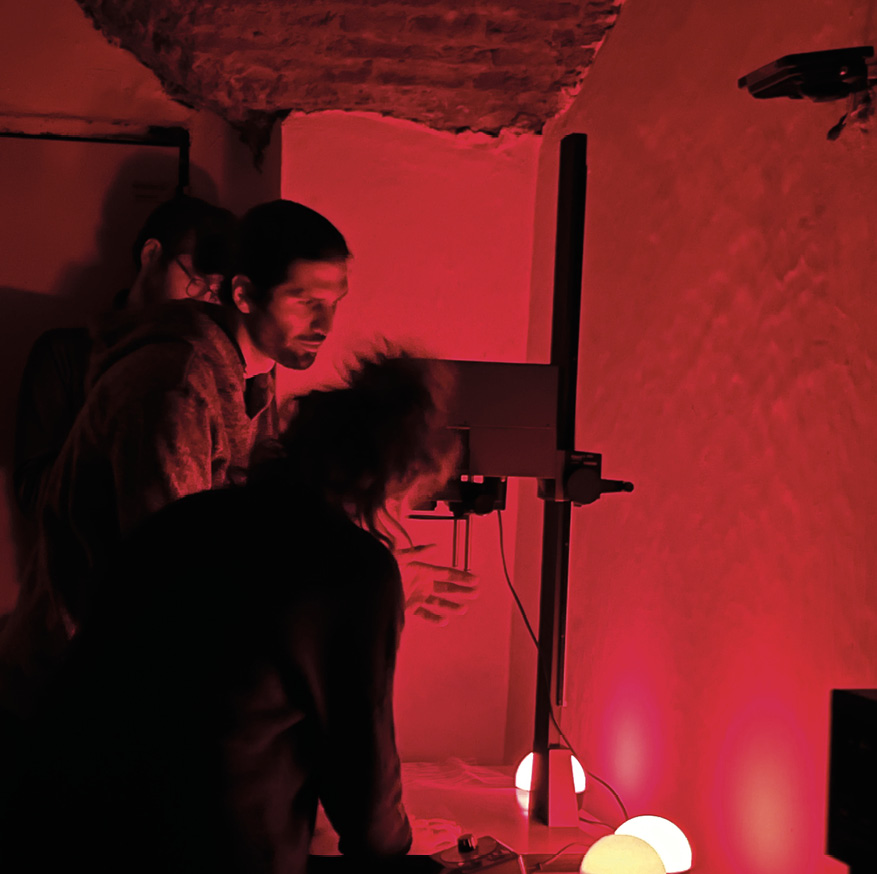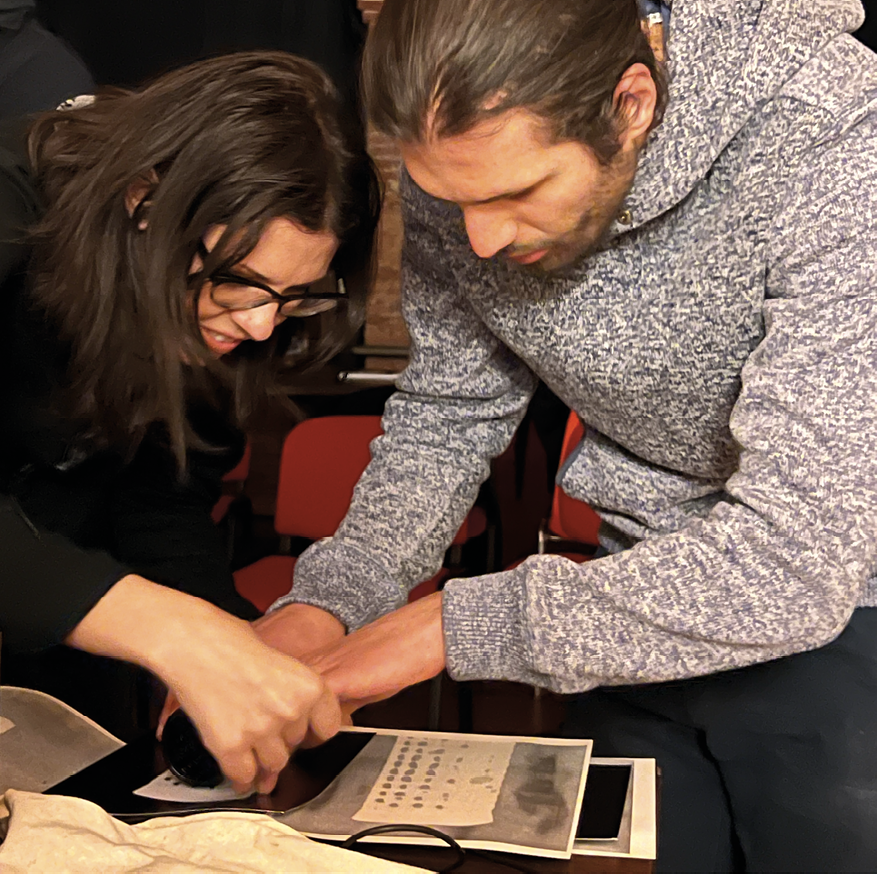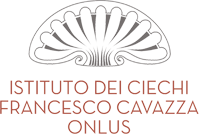"Camera Chiara" is an ambitious project that increases awareness by creating images and, indirectly, through the use of a method that one day might become a new communicative language for both the sighted and sight-impaired.
In 2023, Dr. Davide Carlo Conte came to the Institute with the provocative idea of asking sight-impaired people to enter a camera oscura to create images by means of an almost-forgotten technique: rayography. He proposed an artistic platform for people who wanted to experience photography.
Rayography
With this process, a negative is printed by means of an enlarger, which projects the image captured by the film onto photosensitive paper. In the early 20th century, the artist Man Ray had the idea of using an enlarger to photograph objects placed on the paper, and the process was then called rayography. This technique produces negative images (silhouettes) of the photographed objects: during the development stage, the areas of the paper struck by light become black. You might assume from this brief description that the images created were black or white, but 100 years before Man Ray the physicist Thomas Young had already explained that light behaves like a wave.

The first test
The project was fairly simple to conduct: for the first test, we asked a blind person to enter the camera oscura. He was a teacher who had taken some tactile exploration courses at the Anteros Museum and was very talented at translating images haptically. Mateo had no trouble understanding how the process worked, and we were struck by the fact that he immediately used his body to project shadows by removing his hand from the base of the enlarger to understand how the shadow of his hand would be distorted.
Feedback
At this point, the reader may ask what this experiment can offer to the sight-impaired. And now we come to the Minolta technique, a relief-printing system that creates images to help train blind students: the black image is printed on special microcapsule paper, which is then heated in a special oven, inflating the capsules containing the ink by about 2 mm. Printing the scanned photographic images on microcapsule paper let Matteo feel the image. There were still a few things to be done, but we confirmed that the process worked and could become something important.
We will continue talking about this project in the next issue of Vedere Oltre.


.jpg)



.png)